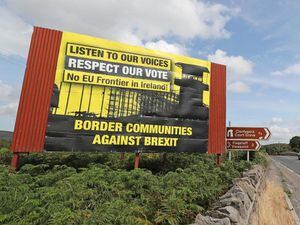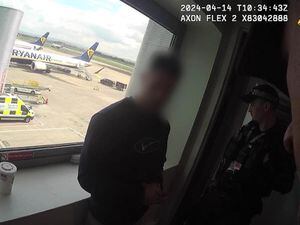We can teach you about tolerance, say Irish border people
International artist Suzanne Lacy and 300 collaborators from the Republic of Ireland and Northern Ireland have created a ‘yellow manifesto’.

People living on the Irish border can teach the world about tolerance, according to an arts initiative.
International artist Suzanne Lacy collaborated with more than 300 people from counties Fermanagh, Monaghan, Donegal, Leitrim and Cavan in producing a “yellow manifesto” of concerns expressed by residents who live there.
An agreed statement said: “We could teach you about tolerance. We could teach about the futility of division.
“Border people have codes; we know how to treat each other in order to keep harmony.
“The border is where realities can co-exist. Co-existence is essential to the contract we have with each other; it is a higher thing than economics or security.”
The manifesto expressed concern the border’s invisibility was at risk from Brexit.
It said: “Keep the border invisible and confined to maps. We want no checkpoints.
“Heightened security doesn’t make us feel more safe or more secure. It makes us feel the opposite – angry, anxious, tense, defensive and fearful.
“The border is now one of cooperation and collaboration.”
Writer Garrett Carr, who worked on the project and distilled the responses of the participants into the manifesto, said the point of the artwork was to stir conversation by giving voice to those who live on the border.
He added: “The border remains a sticking point in the ongoing Brexit negotiations, yet those who make their lives there are not represented in any meaningful way.”
Ms Lacy said the project drew those who lived along the often-invisible border between countries into a conversation on the meaning of the border.
“The artwork explores inverse paradigms – visible and invisible, official and unofficial, rural and urban, the real border and imagined ones,” she said.
“For a brief time, we suggest there is a unique in-between identity for those situated between two countries – a border people – and through playful acts we explore this liminal identity.”
Across and In-Between was co-commissioned by 14-18 NOW, the UK’s arts programme for the First World War centenary, and Belfast International Arts Festival, with the support of the Government of Ireland’s Department of Culture, Heritage and the Gaeltacht and Department of Foreign Affairs and Trade.





